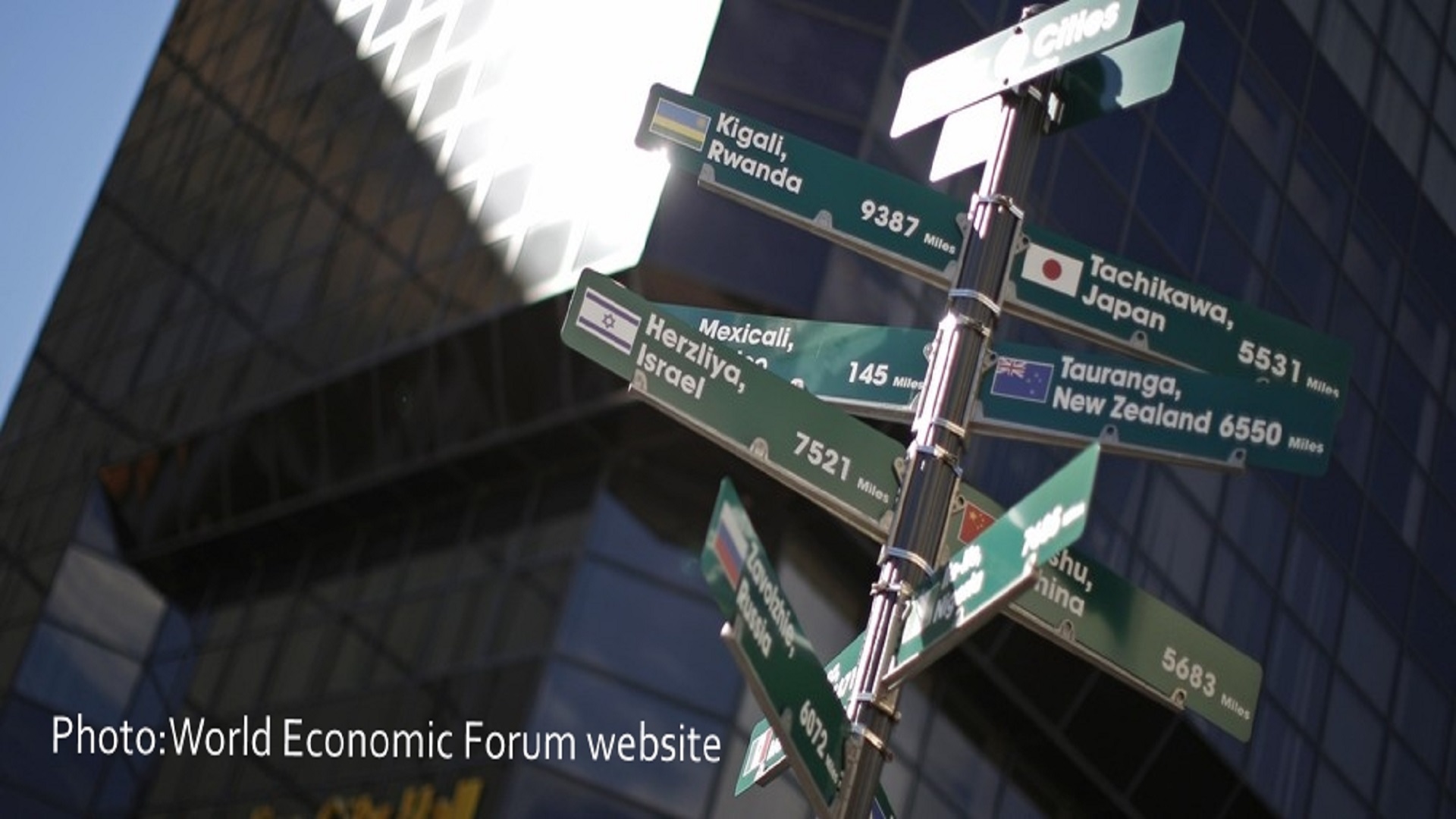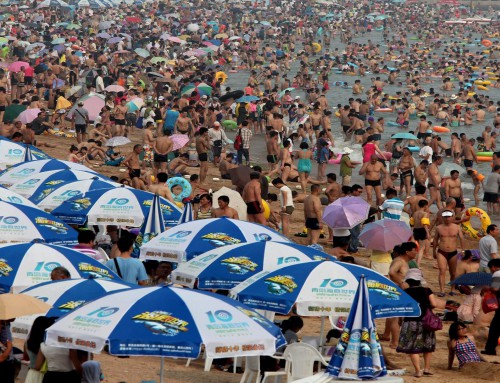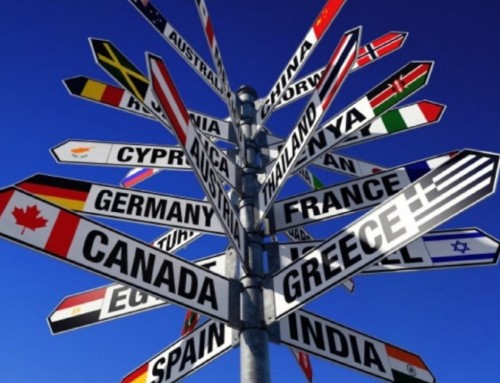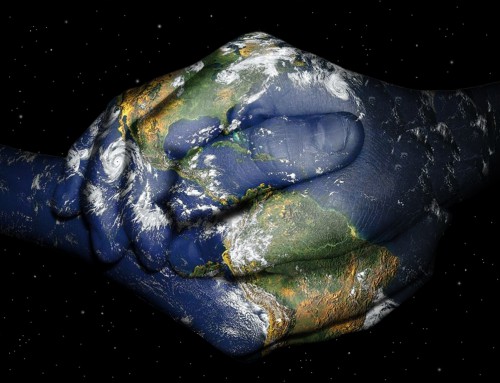Global Tourism Industry
A COURSE TOWARDS THE CHANGE
Chapter 2
The global tourism industry is growing rapidly and, as it is evolving, it is facing new challenges that are influencing the sector. In this topic we highlight the most important factors that are going to play a significant role in the evolution of the industry and will have implications in the decisions of policy makers, institutions and corporations when choosing their goals, deciding about their long term policy and developing their short and long term business and marketing plans to handle business challenges on a national and international level. This article is an effort to connect different aspects related to the global tourism industry using information and opinions from different and reliable sources, aiming at the creation of a solid base to re-think tourism global policy, future actions and business proposals.
The Global Tourism Industry article will be presented in 4 differently connected chapters reaching different aspects of the issue, that as a whole are composE the long INDUSTRY’S COURSE TOWARDS A CHANGE.
This is the second chapter :Globalization’s Impact on Tourism
Chapter 2: Globalization’s Impact On Tourism
Many have written about globalization and how it affects the national economies. As a phenomenon it is not new, as different civilizations through trade reached and affected each other from the very early years of human economic history.
Globalization has increased the interdependence between countries, economies and people and has opened the door to many benefits for human economic and social activities. It has promoted open societies and open economies and encouraged a free exchange of goods, ideas and knowledge. It has not only involved giant corporations, but also small and medium sized businesses together with family-run firms sharing benefits in all social layers. This process has led to the creation and operation of a global tourism market where destinations, which are expected to compete on an equal basis regardless of the country they are in, function interactively.
In many parts of the world, innovation, creativity and entrepreneurship have flourished. In East Asia growth lifted over 200 million people out of poverty in a single decade. Better communications have enhanced awareness of rights and identities, and enabled social movements to mobilize opinion and strengthen democratic accountability.
Among the benefits of globalization is that it has favored the well-established business concepts and their expansion on an international level. It is one of the biggest advantages as it can increase profits, revenues and return of initial investment as well as bringing extra expansion of a particular company. It is vital for managers of multinational companies to follow all the special requirements that running a global company entails in order to compete effectively by achieving high economies of scale. Another necessity for international firms is the accommodation of differences in business practices and disparities on a cultural level.
On the other hand, MNEs have in many cases significantly affected local businesses and even some of the communities in a bad way. Consequently this aspect of globalization has raised serious questions concerning culture, language, legal and political systems, as well as business practices across countries and a truly global conscience is beginning to emerge, sensitive to the inequities of poverty, gender discrimination, child labour, and environmental degradation, wherever these may occur.
This leads to the need to manage these diversities among the nations as they are crucial for all forms of market entry and every process of the internationalization of business. Every culture has its unique behavior, attitudes and lifestyle that impact nearly all aspects of human behavior.
Even chains like McDonald’s, which are popular all over the world with their beef sandwiches, must adjust their products in order to sell successfully. Entering the Indian market was one of their biggest challenges as they had to change the main ingredient as Indian people have religious reasons not to eat cow. The standardization and imitation of Western society brings negative influences on the culture, environment and social values of the nations as in most cases a mitigation of local standard is evident due to the uniformed product of tourism.
Tourism is one of the industries that is affected to a very high degree in terms of supply and demand. Significant supply factors are – diminishing costs of airline tickets and the opportunity for tourists to visit a destination with quite low per capita income, price and social level standards; the impact of internet based reservation and information systems on the suppliers who are based on an international level; and the new promising destinations. Significant demand factors are – the more experienced tourists and the knowledge they have gained through globalization as well the increase of the income and wealth they possess.
As mentioned above, globalization has had certain effects on the operation of small and medium enterprises. It is well known that the existence of a recognized multinational company in an area creates a number of obstacles for the development of smaller organizations. Bigger investors may force the authorities in certain areas to meet their conditions and sometimes even to change existing laws before setting up their businesses.
Nowadays, there is an increasing pressure on the SMEs as a lot of trade barriers no longer exist and MNEs can enter almost everywhere. Some countries like India still keep the doors for many MNEs closed as they want the family businesses and other small enterprises to prosper further. For example in Europe, the fall in transportation expenses and the emerging destinations have put a lot of SMEs under heavy stress. A possible reason behind it may be the lack of using CRS (computer reservation systems). Small and medium sized organizations are unprivileged because of their high unit average costs with respect to production. According to Perik, ‘support for building highly horizontally, vertically and diagonally integrated destinations with flexible operating network alliances would be an important measure to boost SMEs ability to compete with global players and restore their capabilities to deliver significant contributions for income and employment creation’.
The open market principles have brought on a severe competition between destinations in the tourism global arena. That is why, firstly, destinations should find a way to distinguish themselves from competitors on the marketplace by creating a certain image. Then an important tool for sustaining a good competitive advantage is international marketing. In many countries, the public sector is involved in tourism at national, regional, and local levels. This is not the wisest decision in most cases, as the public sector is not well prepared to undertake the leadership in the field of tourism by itself. That is why in most countries the biggest percentage of tourism enterprises is owned and managed by the private sector. However, 90% of all companies working in the field of tourism are SMEs with insufficient resources which have to take account and sometimes fully rely on marketing and training attempts, and education all coordinated and aimed by the public sector. To create the perfect balance and reach the common target, both the private and the public sector should create partnerships and work together to pursue the necessary level of differentiation.
Innovation is another factor determining the possession of a competitive advantage for many companies. As globalization is an inseparable part of today’s tourism environment, the need for innovation to be created by all the parties related to this field (entrepreneurs, managers, as well as tourists and labor) is of crucial interest for the survival and development of tourism enterprises. There is a need of co-producing and co-creating global connectivity as it is of vital magnitude in the emerging understanding of innovation. In most cases, to overcome the problems of competition small and medium size companies should proceed with various collaboration forms inside and outside their borders to be able to compete and gain competitive advantages.
The number of international flights and for shorter distances, bus and train rides has been increasing worldwide and transportation has become faster, more secure and more comfortable. Moreover, one can better plan a trip using the Internet… or even by calling a landlord or the hotel receptionist on their cell phone – something that was not possible even 20 years ago. Tourism provides economic growth, improves infrastructure and creates more jobs but, at the same time, causes pollution and has a negative impact on environment. Sustainable tourism and ecotourism are just a few of the solutions offered to solve these issues.
Although globalization as a system has opened a whole new world of development opportunities many problems seem to be linked to it. There is growing concern about the direction globalization is currently taking. Its advantages are too distant for too many, while its risks are all too real. Its volatility threatens both rich and poor. Immense riches are being generated. But fundamental problems of poverty, exclusion and inequality persist. Corruption is widespread. Open societies are threatened by global terrorism, and the future of open markets is increasingly in question. Global governance is in crisis. We are at a critical juncture, and we need to urgently rethink our current policies and institutions.

Critics , are continuing to define their criticisms and disagreement, claiming that globalization encroaches on national sovereignty, and endangers cultural diversity ,environmental and labor standards. Activists and ordinary citizens around the world – particularly in developing countries – question whether communities, cultures, and nations should be subordinated to the sense of an unregulated, market-driven system, or to a system regulated by international authorities. In the absence of national and /or international regulations and a plan, multinational tourism companies often impose their rules using many destinations as simple products for fast profit.
In a 2012 issue of Tourism Recreation Research, Eric Kohen gives the general framework in which the global tourism model is operating and is helping us to understand globalization’s negative implications on the tourism industry system on an international and national level, as it appears today. The notion of globalization is closely tied in with mass industrial tourism and it is stepping on the same path as the open markets principle:
“At the turn of the millennium, social scientists looked with optimism towards the new century, expecting the current trend of globalization to continue unabated, accompanied by accelerating economic expansion and growing prosperity on the global scale. But these optimistic expectations suffered increasing disappointment as the new century progressed. The recent crises, as a result of the false approach to an effort for a new economic system, touch upon all sectors of the global politico-economic system, but they are of particular significance for the domain of tourism. Tourism is a discretionary activity, engaged upon by people when their more “essential” needs have been already provided for. Owing to the voluntary nature of tourism, the tourism industry is to an extra-ordinary degree sensitive to crises of all kinds, ecological, economic and political.
Internationalization has led to the emergence of a global economy; however, it is often argued to be uneven and unequal. While some multinational corporations and few countries benefit enormously from globalization, many countries experience just the opposite. With political deregulations and various free trade agreements globalization has resulted in foreign ownership of tourism businesses. Reid refers to the effect as ‘financial leakage’ suggesting that although many successful examples of tourism creating economic benefits exists, it is rare that tourism would promote the economy of the host country and that transnational organizations are often the ones to profit from the operations. Although tourism’s purpose is often stated to be creating employment and wealth many of the jobs created by the industry are poorly paid and seasonal, Additionally multinational corporations often opt for foreign labor at the cheapest costs to maximize profits, regardless of the effect on the host communities.
Mowforth and Munt suggest that the uneven benefits of the industry’s operations are due to globalization having drawn ‘third world’ countries into a global open system. Furthermore, tourism can undoubtedly create problems among communities that have had little exposure to people from the wealthier places of origin where tourists are usually from. Not only does tourism create economic issues in the developing countries but is often also blamed for the depletion of natural resources and changing the destinations culture and characteristics. It becomes clear that the globalized tourism industry creates unequal social and economic benefits as well as negative impacts between nations”.
During a United Nations conference leaders from different countries of the continent noted that “globalization had yielded benefits for only a small part of mankind –- the part that could do without them –- at the expense of the larger expanse of humanity that could not. It had boosted economic growth, expanded global trade, increased investment flows and connected regions and peoples. But it had also increased the digital divide, widened income inequalities and concentrated economic power in the hands of a few. The effectiveness of global economic institutions had been growing, and the recent failure at the Cancun World Trade Organization (WTO) talks had done little to relieve them. The international community must address asymmetries in international finance, trade, technology and investment patterns that were having a negative effect on development.
There is continued marginalization of developing countries from globalization’s benefits and persistent economic gaps between developed and developing countries. Developed countries still faced barriers to markets, capital and technology and grappled with the structural transformations needed to integrate effectively into the world economy. Developing countries clearly needed greater assistance to build economic, technological, trade, industrial and institutional capacities. International partnerships among governments, international organizations and institutions, regional groups, civil society and the private sector were the only viable means to extend globalization’s benefits to marginalized developing countries. Moreover, the institutional capacities of international organizations and bodies must be strengthened to promote good global governance”.
Taking into account that, tourism is tightly connected to other aspects of social life such as the economy, environment and national culture, the political decisions taken on national and international levels along with necessary regulations are extremely crucial for the future not only of tourism, isolated as a globally important business sector and income generator, but for social stability in different nations within this global society.
Hence policy makers should examine the implications of their political decisions that lead to increasingly severe global crises which affect tourism and argue for the need to re-think the policies of tourism development in non-Western countries in the light of emergent vulnerabilities.
Read More At: Mass Tourism Model Is about To Reach its Life Cycle Peak….Shortly
References:
- The American Interest: Globalization and Political Instability
- Inclusive Growth: The Effect of Globalization on National Economy & Business (http://inclusive-growth.com/2016/03/the-effect-of-globalization-on-national-economies-and-business/ )
- Research Gate: Globalization, Global Crises and Tourism/Eric Kohen
- ROUDOMETOF, V. (2005). Transnationalism, Cosmopolitanism and Globalization. Current Sociology.
- WOLF, N. (2011). The Hangover: Austerity Forces People Back to Simpler Pleasures. The Nation.
- Pike, A., Marlow, D., McCarthy, A., O’Bried, P. &Tomaney, J., Local Institutions and local economic development. The local enterprise partnerships in England 2010. Cambridge Journal of Regions, Economy and Society, 2015.
- Wharton University Of Pennsylvania: Demographic Changes: A Catalyst for New Models in the Global Tourism Industry.
- Journalist Resource: Impacts of the world recession and economic crisis on tourism: North America
- World Economic Situation and Prospects 2015, United Nations / New York 2015
- Martin, R., Sunley, P. & Tyler, P., Local growth evolutions: recession, resilience and recovery. Cambridge Journal of Regions, economy and society.
- Cohen, E., 2012, Globalization, global crises and tourism. Tourism Recreation Research.
- Inclusive Growth: If Norway Can Build a Sustainable Economy, so Can We / Planet Experts / August 10,2016 / By Douglas Smith(http://inclusive-growth.com/portfolio-items/if-norway-can-build-a-sustainable-economy-so-can-we/ )
- School of Hospitality, Tourism and Marketing Victoria University Melbourne, Australia(Sarah JR Ryu): POLITICAL INSTABILITY AND ITS EFFECTS ON TOURISM.
- Tourism Master: The Influence of Terrorist Attacks and Political Instability on Tourism.
- Travel-conference.co.uk: Globalisation – An unequal effect on the tourism industry.
- United Nations: UNEQUAL BENEFITS OF GLOBALIZATION, NEED TO IMPLEMENT DEVELOPMENT FINANCING COMMITMENTS FOCUS OF SECOND COMMITTEE DEBATE.
- Harvard Business Review: The Competitive Advantage of Nations
- New York Times: A Global Push to Address Trade and Inequality/May 26, 2016
- World Economic Forum: Six Factors shaping the global economy in 2016
Read Chapter 1 : Global Tourism Key Facts, Mega Trends and Long Term Outlook 2016-2026







Leave A Comment